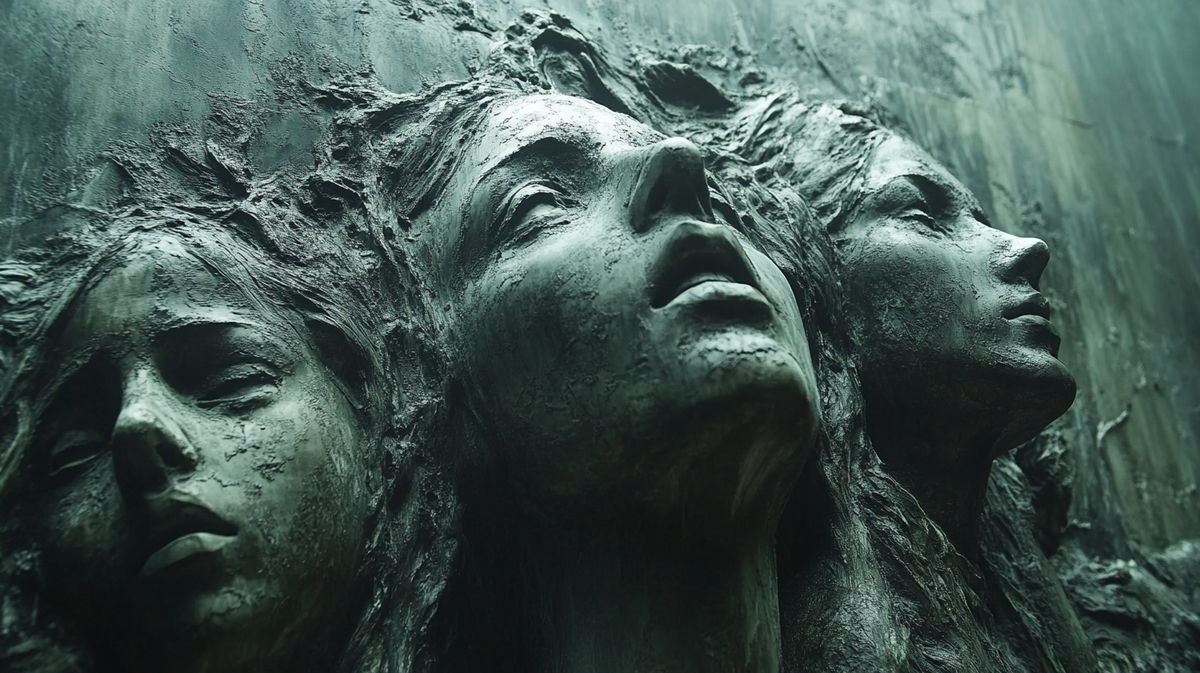"Never let a good crisis go to waste." — an adage too often proven true in the machinery of global power.
On September 10, 2001, Secretary of Defense Donald Rumsfeld declared war — not on terrorism, but on the Pentagon's own bureaucracy. He revealed that the Department of Defense couldn't account for a staggering $2.3 trillion. The next morning, that story was buried beneath the rubble of the World Trade Center and the smoking crater in the Pentagon's west wing. What followed was a tectonic shift in American policy, foreign entanglement, surveillance law, and defense economics. But beneath the patriotic gloss, one must ask: what was already known, and how was the aftermath not only foreseeable but wildly profitable for a select few?
"The System Was Blinking Red": What Was Known and Ignored
The official narrative frames 9/11 as a surprise attack, a Pearl Harbor-style awakening. But insiders and intelligence professionals paint a far grimmer picture — not of surprise, but of negligence, fragmentation, and willful blindness.
The August 6 PDB
One of the most damning documents is the August 6, 2001 Presidential Daily Brief, titled "Bin Laden Determined to Strike in U.S." This memo, presented to President George W. Bush, outlined credible threats of terrorist plots involving the hijacking of airplanes.
It referenced FBI information indicating patterns of suspicious activity "consistent with preparations for hijackings."
It noted that Bin Laden had been surveilling federal buildings in New York.
The NSA's Intercepts
In James Bamford's The Shadow Factory, the National Security Agency (NSA) is shown to have had intercepts of al-Qaeda communications between operatives overseas and individuals in the U.S. — including Khalid al-Mihdhar and Nawaf al-Hazmi, both of whom were hijackers aboard Flight 77. These men were living openly in the United States, their real names on flight manifests. NSA policy prevented them from sharing identities of suspects with the FBI. The CIA also knew of their presence in the U.S. and withheld the information.
Flight School Warnings
Several flight instructors, including those at Pan Am International Flight Academy, raised concerns to the FBI about students not interested in learning how to land airplanes. One of them, Zacarias Moussaoui, was arrested in August 2001, and agents in Minnesota begged to search his laptop, believing he might be planning to hijack a plane. Their requests were denied by FBI headquarters.
Follow the Profits: Financial Maneuvering Around 9/11
The Insurance Windfall
In July 2001, developer Larry Silverstein signed a 99-year lease on the World Trade Center complex. Immediately afterward, he took out an insurance policy that specifically covered terrorist attacks. After the attacks, Silverstein sued the insurers, arguing that the two plane crashes constituted two separate events. He eventually received a payout of approximately $4.55 billion, more than the lease's total cost.
While taking terrorism insurance was not uncommon — especially after the 1993 WTC bombing — the timing and scale led many to question the underlying motives or foreknowledge. No evidence of criminal wrongdoing has ever been proven.
Put Options and Suspicious Trading
In the days leading up to 9/11, anomalously high volumes of "put options" were placed on United and American Airlines stock — the two airlines whose planes were hijacked. A put option is a bet that a stock's price will fall. The Chicago Board Options Exchange noted spikes far above normal levels. Many of these trades were placed through financial institutions like Deutsche Bank-Alex Brown, formerly headed by Buzzy Krongard — who later became Executive Director of the CIA.
The 9/11 Commission Report mentions these trades but concluded they were coincidental, despite the fact that many remained unclaimed, suggesting foreknowledge by parties unwilling to draw attention.
The Rapid Passage of the Patriot Act
Barely six weeks after the attacks, Congress passed the USA PATRIOT Act — a sweeping piece of legislation that fundamentally altered American civil liberties. It expanded wiretapping and surveillance powers of the NSA and FBI. It allowed secret court orders, sneak-and-peek searches, and indefinite detention without trial. It laid the groundwork for mass domestic spying — programs that would later be exposed by Edward Snowden.
The bill was 342 pages long and introduced just a few days after the attacks, leading critics to suggest that much of it was pre-written, awaiting a crisis to make it politically viable.
Into the Quagmire: The Wars That Followed -
Afghanistan
Initially justified as a strike against al-Qaeda, the war in Afghanistan became the longest conflict in American history. In 2002, the U.S. rejected a Taliban offer to hand over bin Laden if evidence was shown of his guilt. Defense contractors such as Halliburton, Raytheon, and Blackwater received billions in contracts. The war would cost over $2.3 trillion, according to Brown University's Costs of War project.
Iraq
The 2003 invasion of Iraq had no connection to 9/11, yet was sold to the public through implication and false claims of Weapons of Mass Destruction (WMDs). Senior officials like Dick Cheney and Donald Rumsfeld conflated Saddam Hussein with al-Qaeda, despite CIA reports stating the contrary.
The war destabilized the region, birthed ISIS, and killed hundreds of thousands. Private corporations profited immensely from reconstruction contracts.
The Pentagon Budget Black Hole
Remember Rumsfeld’s admission of the missing $2.3 trillion? The very next day, Flight 77 struck the Pentagon’s west wing, destroying the offices of the Defense Accounting Division, killing many of the personnel who were investigating financial discrepancies. No audit was completed. The investigation into the missing trillions evaporated in fire and steel.
In subsequent years, reports emerged of repeated accounting failures, with the DoD failing audits even in the late 2010s. The 9/11 tragedy, in effect, reset the accountability clock.
Surveillance for the Ages: The NSA and Domestic Spying
The 9/11 attacks paved the way for the creation and expansion of a surveillance state — quietly at first, then explosively revealed by whistleblowers.
Stellar Wind, Trailblazer, and ThinThread
NSA insiders like William Binney and Thomas Drake revealed that the agency had programs capable of intercepting terrorist communications before 9/11 — but they were shelved in favor of contractor-led boondoggles. ThinThread was cheap, effective, and privacy-conscious. It was replaced by Trailblazer, a massively expensive failure.
Edward Snowden’s Revelations
In 2013, Snowden showed that the NSA had built systems to monitor the phone calls, emails, and browsing data of millions of Americans, regardless of suspicion. Programs like PRISM allowed access to Google, Facebook, and Apple user data. Bulk metadata collection became normalized. The foundations of these systems were all laid in the wake of 9/11.
A Convenient Catastrophe?
It is not necessary to claim that 9/11 was "an inside job" to recognize that it served many inside interests:
It enabled the passage of unpopular surveillance laws.
It justified wars with geopolitical and economic motivations.
It diverted attention from Pentagon financial scandals.
It unleashed defense spending on a scale unseen since WWII.
And it enriched private contractors while the public paid the bill.
The story of 9/11 is not just one of terror and tragedy, but of profit, power, and policy — a moment when the machinery of the state shifted into overdrive, and those watching the gauges did not flinch.
History may not repeat itself, but it rhymes. And in this stanza, the rhyme is lined with dollars, data, and dead silence.
🔖 Selected References:
Bamford, James. The Shadow Factory. Anchor Books, 2008.
9/11 Commission Report, 2004.
Snowden, Edward. Permanent Record. Metropolitan Books, 2019.
Congressional Record, USA PATRIOT Act Debate, October 2001.
Brown University, Costs of War Project, 2021.
Financial Times, "Pentagon Loses Track of Trillions", Sept 2001.
U.S. Securities and Exchange Commission, "Pre-9/11 Options Trading Review", 2002.
Interviews with Thomas Drake, William Binney, and whistleblower statements.
FOIA requests and FBI declassified docs on Flight School warnings.
New York Times, reporting on Larry Silverstein litigation.


Member discussion: